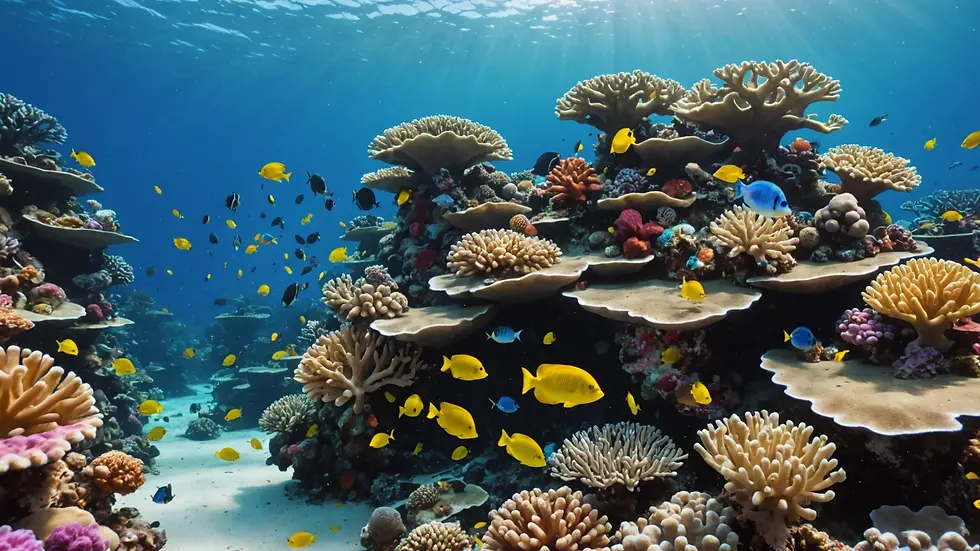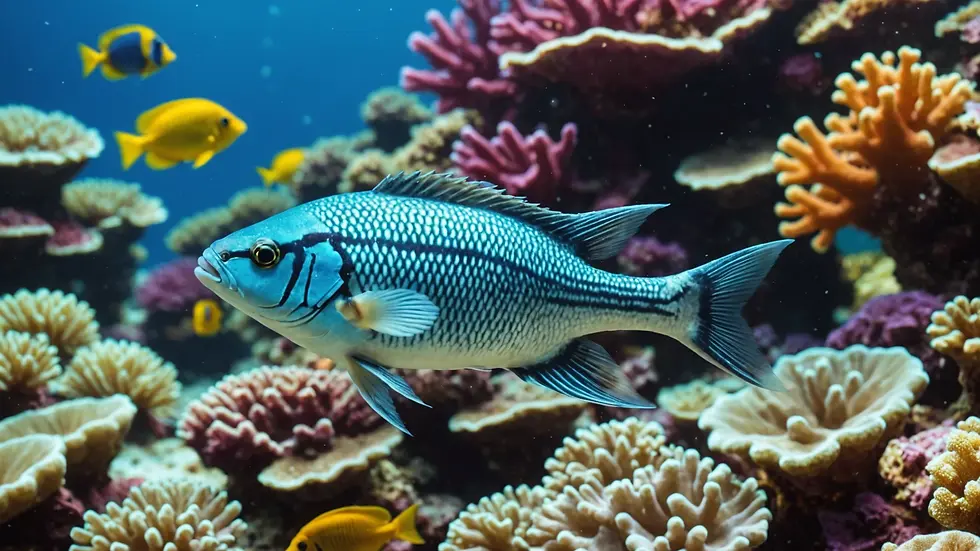How do fish find their way without getting lost in the vast ocean?
- Jyotiraj Borah
- Feb 5
- 4 min read
Fish are truly captivating creatures, not just for their diversity but also for their excellent navigational skills. Despite living in a seemingly endless three-dimensional environment, various fish species have developed effective methods to travel through the ocean. Let's explore the incredible techniques fish use to navigate, highlighting their instincts and biological adaptations.
The Complexity of the Ocean Environment
The ocean covers over 70% of our planet, presenting a complex ecosystem filled with varying depths, currents, and temperatures. Navigating this ever-changing environment is no small feat for any creature.
For instance, depths can range from just a few feet to over 36,000 feet in the Mariana Trench. Temperature fluctuations can exceed a 20-degree difference from surface to depth. This variation makes it essential for fish to adopt specific navigational strategies. Research has shown several methods fish use to orient themselves, which we will discuss in detail.
Innate Navigation: The Role of Instinct
Fish have evolved innate navigational abilities that help them thrive in their environments. They often use physical features, such as coastlines and underwater structures, as guides.
Take salmon, for example. These remarkable fish swim thousands of miles from the ocean back to their spawning grounds. They recognize key landmarks and rely on an extraordinary sense of smell to follow chemical cues in the water. Studies reveal that salmon can detect certain scents from over a mile away, underscoring their reliance on this powerful biological capability for survival and reproduction.
Use of Environmental Cues
Olfactory Cues
Olfactory cues play a pivotal role in fish navigation. Their keen sense of smell allows them to detect pheromones and chemical substances present in the water.
For instance, species like bass utilize these chemical signatures to locate both mates and food. Juvenile fish recognize the unique chemical footprints of their home rivers. If they are caught in a river's current, they can still navigate back effectively, showcasing the importance of this sensitivity for spawning and survival.
Visual Cues
Fish also rely heavily on their eyesight. Many fish are visual hunters, using features such as color and movement to navigate their surroundings.
Interestingly, fish can detect polarized light. Research has shown that this ability, which occurs underwater as sunlight reflects and scatters, aids them in orientation and finding prey. For example, species like parrotfish can use polarized light to discern subtle changes in their environment, enhancing their navigation skills.

The Role of the Earth's Magnetic Field
Many fish species have a remarkable ability to sense the Earth's magnetic field. This skill assists them in long-distance migrations between breeding and feeding areas.
Sharks and tuna, for example, are known to use geomagnetic cues as a compass during their journeys. These species have special receptors that detect variations in the Earth's magnetic field, allowing them to maintain their heading over vast distances. Research indicates that sharks can travel more than 1,200 miles while using these magnetic signals to stay on course.
Utilizing the Sun and Stars for Navigation
Fish also make use of the sun and stars for orientation. During daylight, fish can gauge their position by tracking the sun, while at night, certain species may navigate by recognizing patterns in the stars.
While this celestial navigation is still being studied, scientists have discovered light-sensitive organs in some fish, hinting at their ability to perceive celestial patterns. This capability can be crucial when navigating through the dark ocean waters.
The Importance of Navigation During Migration
Migration is a vital behavior for many fish, especially during spawning. It requires accurate navigation to ensure they reach their destinations.
Eels are famous for their epic migrations. Some species travel over 3,700 miles to their spawning grounds. This journey showcases how critical effective navigation is for both survival and reproductive success.
Effects of Environment and Human Impact on Navigation
Human activities, such as shipping, fishing, and coastal development, can disrupt the environmental conditions fish rely on for navigation.
For example, bright urban lights can disorient migratory species that depend on natural light for guidance. Research estimates that artificial lights can cause a misdirection rate of up to 30% in some fish populations. Furthermore, water pollution can interfere with chemical cues, making it harder for fish to find breeding grounds and food.
Protecting the habitats and ecosystems where fish thrive is crucial. Improving conservation initiatives can significantly reduce these impacts and help fish populations flourish.
Tools Inside Fish: The Lateral Line System
Fish have a unique sensory system called the lateral line, crucial for navigation. This system consists of channels filled with fluid that detect changes in water pressure and movement.
The lateral line allows fish to sense vibrations, which is vital for navigating in murky waters where visibility is poor. This adaptation helps them detect predators, locate prey, and even communicate through water currents.

Social Navigation: Learning from Peers
Fish can also enhance their navigation skills through social learning. Species that travel in schools often observe and follow one another, benefiting from collective strategies.
For instance, when schools of herring swim together, they can effectively navigate as a unit. Leading fish may use various environmental cues, while others in the group gather essential information based on their positions. This social method of navigation not only increases their chances of finding food but also helps them evade predators.
Navigating for Survival
The navigation techniques employed by fish are varied and perfectly suited to their environments. Fish use innate instincts, environmental cues, magnetic fields, and social learning to thrive in the ocean's vastness.
Understanding how fish navigate enriches our knowledge of marine life. It also highlights the need to protect their habitats. By taking responsibility for our oceans, we can reduce human impact, helping fish maintain their incredible navigation skills and ensuring the balance of marine ecosystems remains intact.
Continued research and conservation work are vital for preserving these astonishing navigators and allowing their remarkable journeys to continue through the changing tides of time.




Comments